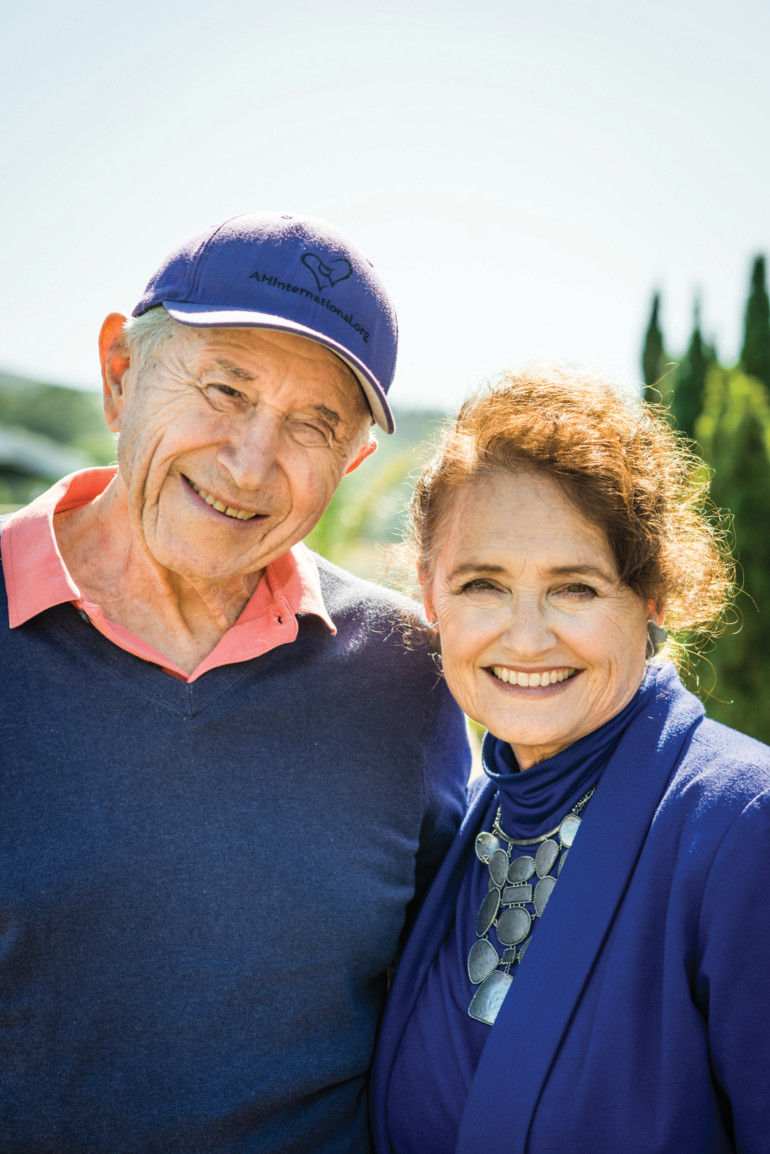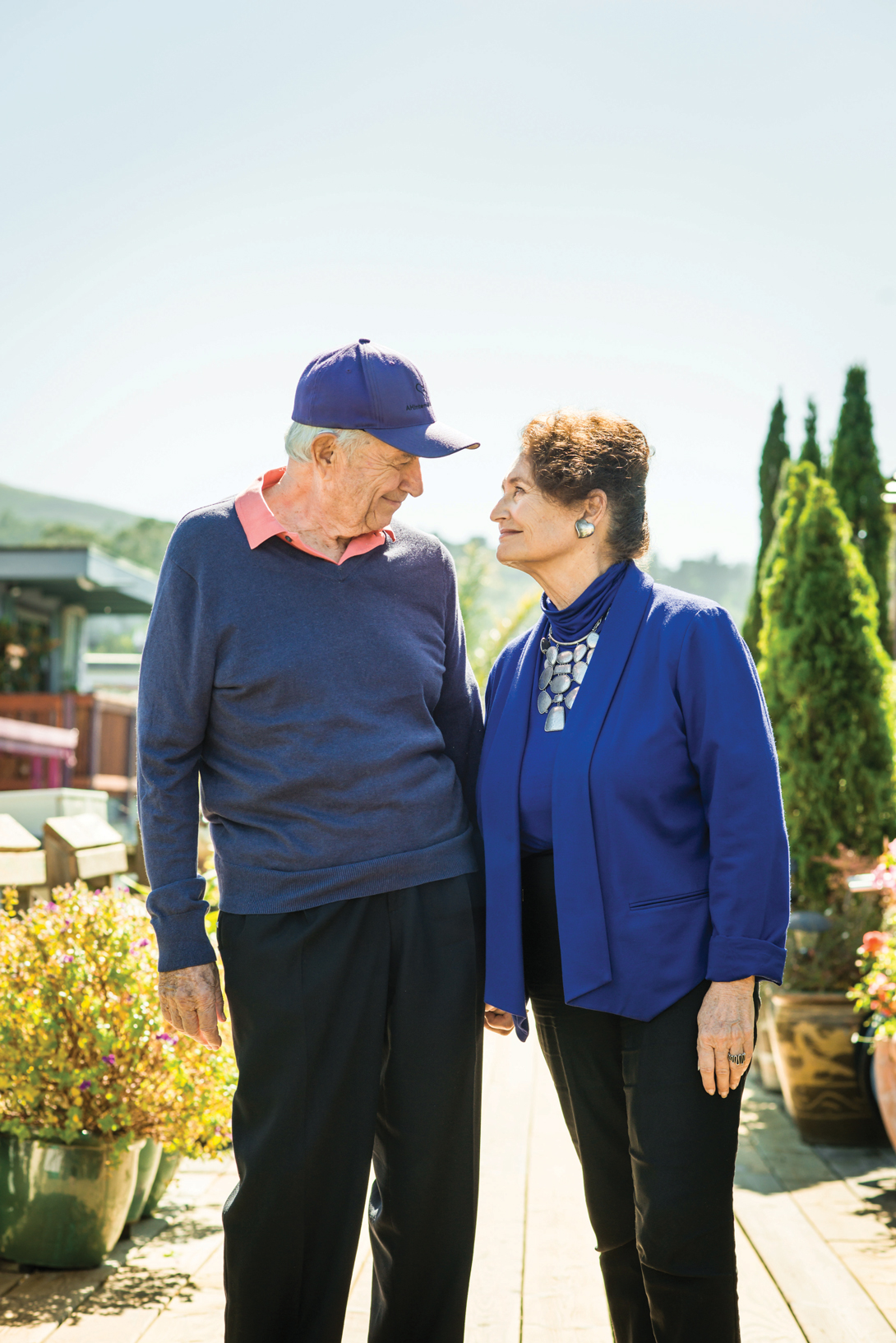GERALD “JERRY” JAMPOLSKY’S life story reads like the ultimate self-help book. The boy who was a shy underachiever with a learning disability grew up to be a world-renowned, Stanford-educated child and adult psychiatrist. His Center for Attitudinal Healing (with local centers in the North Bay and Oakland), where he worked with children who had life-threatening illnesses, once merited a visit from Morley Safer of 60 Minutes. When Jampolsky extended this groundbreaking therapy to parents and siblings, his model went global. Mother Teresa applied his principles to her teachings. He even gave Oprah an “aha” moment. Jerry and Diane Cirincione-Jampolsky, his wife and partner, now live on a houseboat in Sausalito. At 92, he’s still writing, still looking forward. Looking back, he sees a story of persistence, destiny — and luck.
Tell me about your childhood.
I didn’t realize I was dyslexic because it hadn’t yet been named as a learning disability. I was clumsy and bumped into things. I flunked kindergarten. In first grade, I’d raise my hand and give the wrong answer, so I learned not to raise my hand. I was very shy. I was unable to learn to read or write, and rote memory was all but impossible. Meanwhile, I had two older brothers who were very bright and accomplished.
What was high school like for you?
I began to know that I wanted to go to medical school and then into psychiatry to find out what made my time as a child so difficult and try to heal myself and help other kids.
What was college like?
It was so long ago that you could get into University of California with a D-minus average, so that’s how I got in. But I had to take an English test, which I flunked. I had to take a dumbbell English course and got a D-minus-minus. The professor said, “Jampolsky, I don’t know what you are going to do in life, but for God’s sake, don’t ever try to write a book.” Of course, I believed him and gave my power away. I didn’t write my first book until I was 50.
How many books have you written?
Twenty.
And how many books have you sold?
A little more than 10 million.
How did you do in medical school?
My grades were so poor that I graduated on probation. But during my internship, a doctor believed that I could make a good doctor rather than a doctor who just got by and barely passed. I didn’t know this at the time, but they were grading the internships. I came out at the top.
Why do you think that was?
I had a good way with patients. I got the right diagnosis for the wrong reasons because I was a psychic.
Oprah said, “That was a transcendent moment for me when you told me, ‘Forgiveness is giving up the hope that the past could be any different.’ ” Is that the core of Attitudinal Healing?
Attitudinal Healing is a unique, cross-cultural and inspired path to love attained by letting go of fear, saying goodbye to guilt, and releasing shame, worry and blame through unconditional love and forgiveness of self and other. Attitudinal Healing is based on the premise that ultimately it is not other people, events or experiences in the past that are causing us to be upset or stressed out. Rather, it is our thoughts, attitudes, and judgments about those things that cause our distress. We may not be able to change others. And we know we can’t change the past. But we can change our perceptions of these in the present.
How do you personally apply the principles of Attitudinal Healing to the aging process?
We see ourselves as works in progress, striving to be in a higher consciousness by doing our best to incorporate and live the principles of Attitudinal Healing and the guidelines in [our book] Aging With Attitude. We strive to make forgiveness and letting go of judgments, guilt and anger part of our daily practice. We do our best to watch what we put in our mouths and what we put into our minds.
And you, Diane?
We practice meditation daily. We go to the gym five to six times a week for an hour and a half each time. We also start the day with gratitude and seeing inner peace as our only goal. We remain passionate and happy beyond our previous expectations, feeling useful, focusing our lives of service on bringing Attitudinal Healing to people who have requested it around the world. This, by the way, does not feel like work but pure joy. We find that all of the above works quite well for us, if not always perfectly. And we are happy to say that we no longer have any fears or worries about aging.
You say “attitude is everything!” What does that mean?
We know that our happiness, and how well we feel we have lived our lives, isn’t determined by the level of our education or by how much money we have or by how many things we have amassed or the job titles or positions we have held or by the number of friends we’ve made or by the experiences we’ve had in the past. Happiness and feeling good about the lives we are now living are most profoundly determined by the attitudes we hold in our minds. In actuality, how we experience everything in our lives is ultimately determined by our attitudes. Therefore, healing our attitudes becomes a major stepping-stone toward enjoying a happy and fulfilling life.
What you are writing about these days?
Diane and I are working on something about how writing Aging With Attitude together changed our minds about aging. We are now enthusiastically living the second half of our lives with inner peace, happiness, and never-ending creativity, regardless of what may be happening to our bodies. As you know, I am now blind.
Is there a new book?
I just recently released Poetry and Notes to Myself, the most intimate details of my internal journey. It discusses my move from militant atheism through a spiritual awakening by direct experience.
You are now moving toward a century on the planet. What’s different for you now? I choose to laugh more and not take myself and life so seriously; be guilt and judgment free; be free of attacking others or myself; see how I can be helpful to others each day; always choose peace over conflict and make all my decisions based on love instead of fear.
This article originally appeared in Marin Magazine’s print edition with the headline: “Jerry and Diane Jampolsky”.



